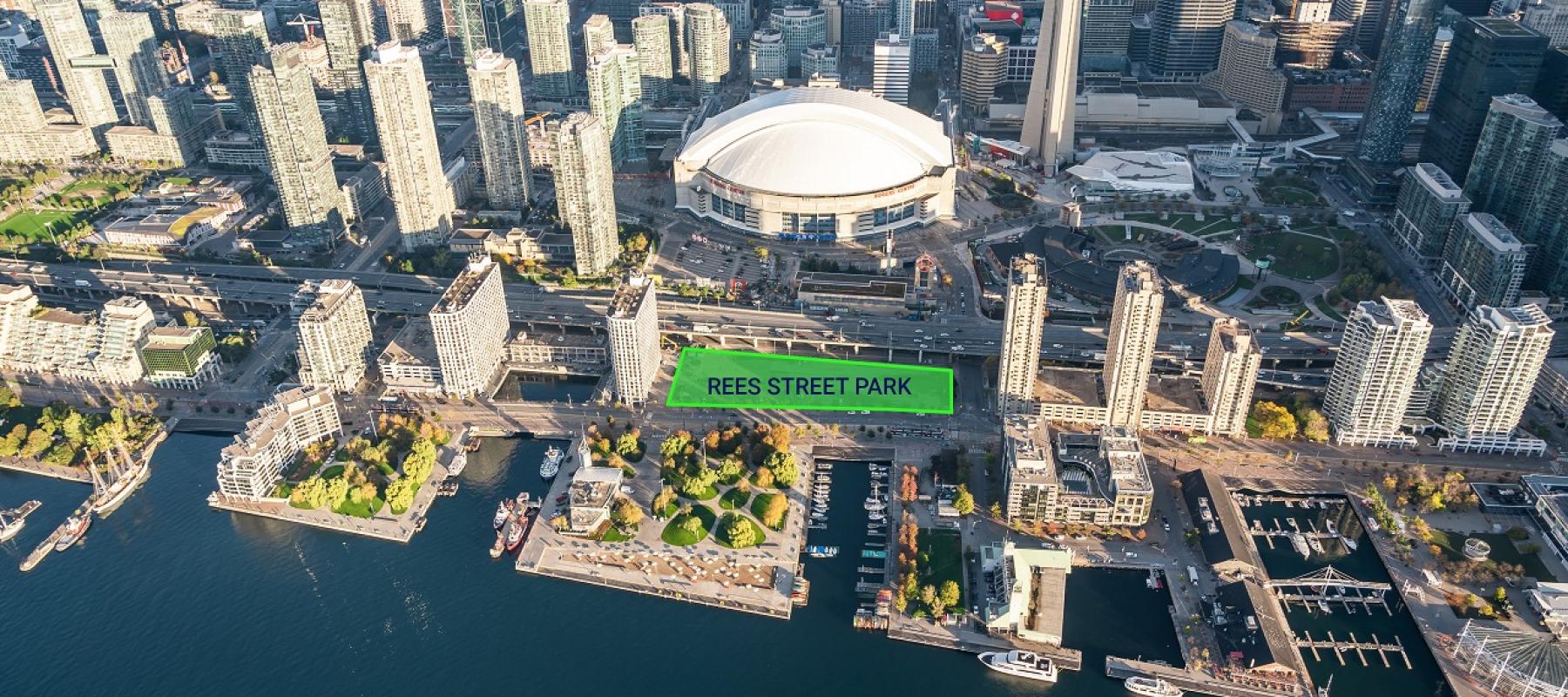Rees Street Park
Located at the foot of Lower Rees Street
and Queens Quay in the Central Waterfront
Waterfront Toronto is working in partnership with the City of Toronto to deliver Rees Street Park on Toronto’s Central Waterfront. Once complete, this new park will connect a series of public spaces on the north side of Queens Quay.
Located at the foot of Rees Street at Queens Quay West, this 9,800 square metre (2.4 acres) future park sits in a mixed-use part of the waterfront just south of the Rogers Centre, CN Tower and Entertainment District, and is currently operated as a parking lot.
Creating a combination of fun recreational uses for kids and adults who want to relax, meet up with friends and play together, the design goals aim to support spontaneous and un-programmed community-building and outdoor recreation.
The final park design will be determined through community engagement and is proposed to include a playground area, recreational courts, an off-leash area, a large lawn for flexible programming and relaxation, as well as plenty of seating and space for year-round passive activities.
Quick Facts
Consultation and public engagement
In November 2023, the Rees Street Park Stakeholder Advisory Committee reviewed the design goals and programming requirements for the park to reflect on whether they were still relevant or if adjustments should be made, given the various contextual changes to the site.
In early 2024, Waterfront Toronto and the City of Toronto will be releasing a Request for Proposals (RFP) to secure a design team for the park. The public will have an opportunity to provide feedback on the updated goals and programming requirements while the project team advances the procurement process to secure a design team for the park design. Public engagement is an important part of our design process and essential to creating a valued public green space on the waterfront.
Background
In February 2018, Waterfront Toronto and the City of Toronto’s Parks, Forestry and Recreation launched an international design competition for the design of Rees Street Park and York Street Park. More than 40 design teams from 18 cities world-wide submitted proposals during the pre-qualification stage of the competition. Five design teams were shortlisted to participate in the six-week design competition for Rees Street Park.
Communication and engagement with the public were key components of the design competition. A Stakeholder Advisory Committee comprised of local residents, businesses and neighbourhood groups met at key points during the competition to provide advice and feedback to the project team and the jury.

